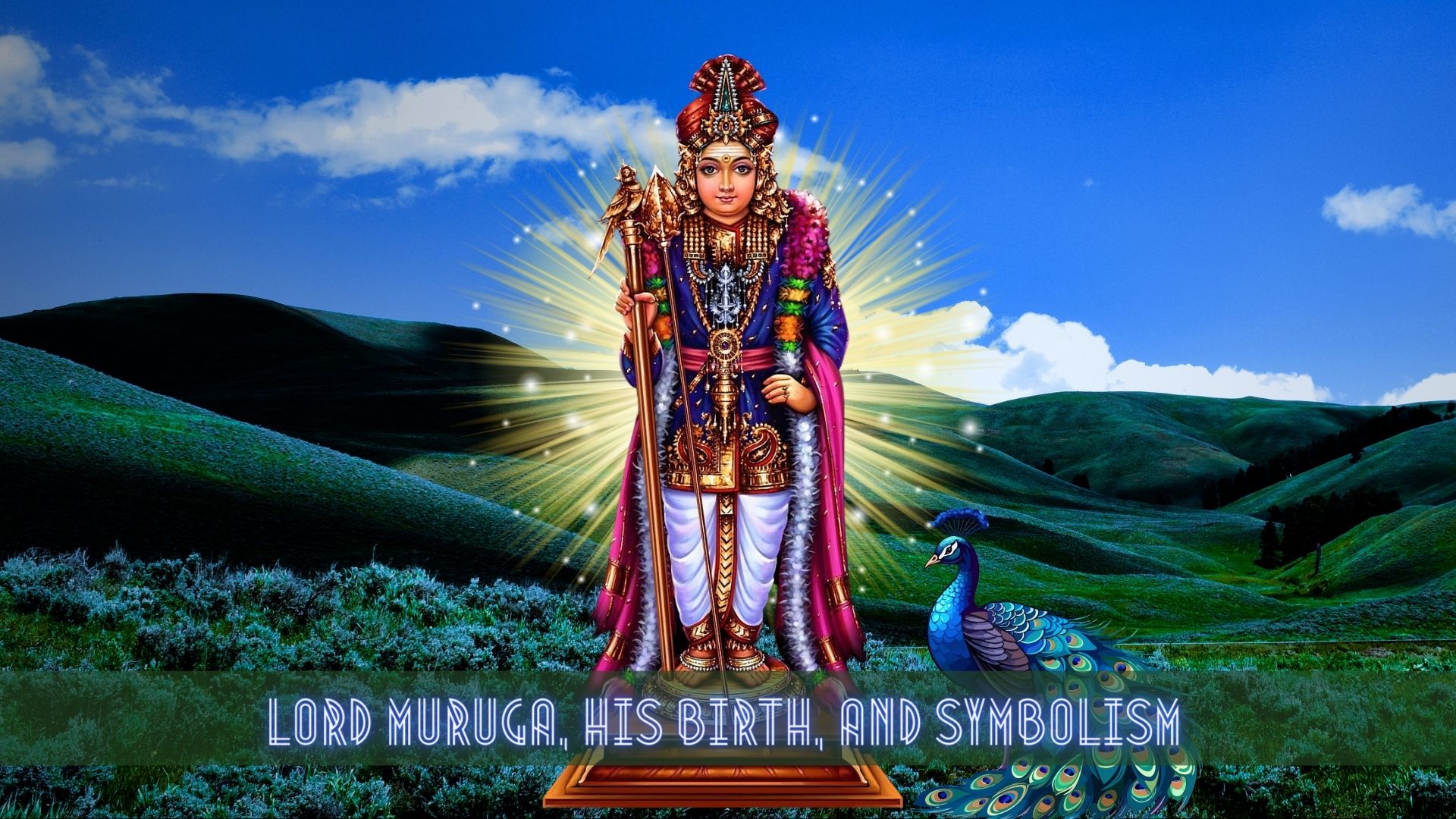
The names Muruga, Karthikeya, Skandha, Shanmuga, Deva Senapati, and Saravana are all synonymous with the son of Lord Shiva and Goddess Parvathi. He is a unique combination of courage and divine intellect combined into one supreme being. He is a charming young warrior and the brother to Lord Ganesha. Always a fighter for justice and the slayer of the Asuras.
As the patron of the Tamil language, Lord Muruga is one of the most loved and respected Gods of South India and in places with Tamil influence, such as Malaysia and Sri Lanka. Tamil poets and poetesses have composed numerous hymns praising the Lord. The most detailed and loved work is from the Poet Arunagirinathar, who wrote the Thiruppugazl. Another famous hymn on the Lord, sung daily by the devotees of Lord Muruga, is the Kanda Shasti Kavacham. The word Kavacham means a shield. When sung by the devotees, this hymn will protect them from all the suffering and agony. Apart from the many songs written for Lord Muruga, numerous stories are further associated with him.
BIRTH OF LORD MURUGA
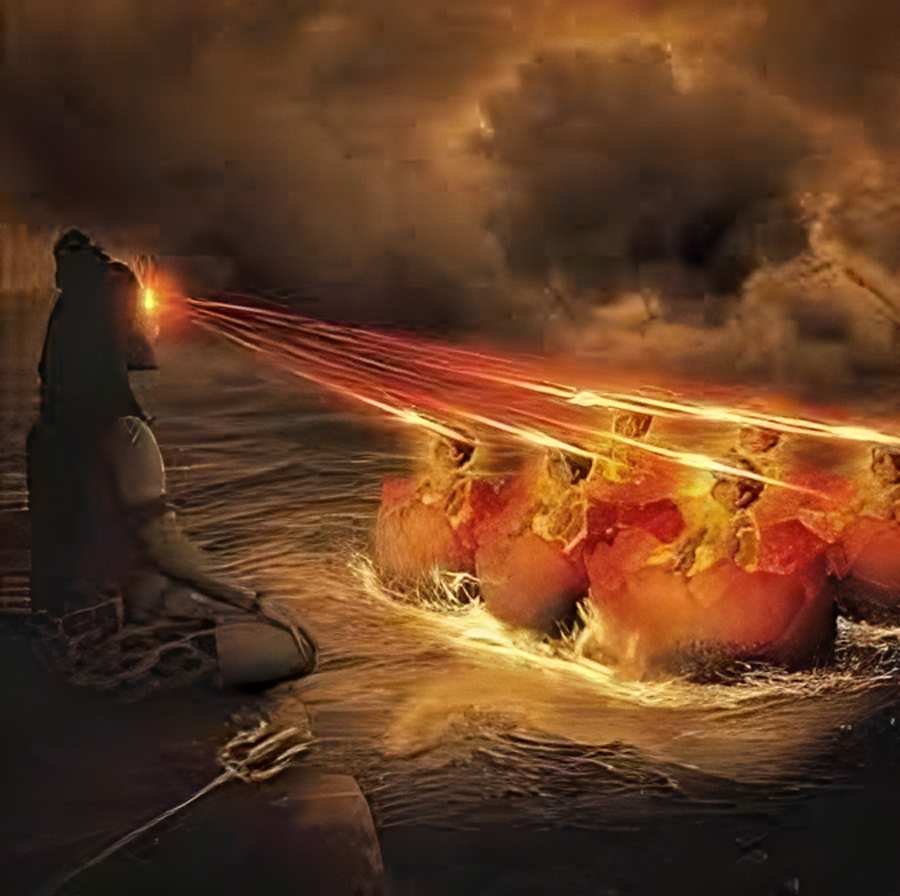 Once, there were three Asuras - Soorapadma, Simhamuga and Tarakasura. They were born to Vajrangan and Varangi. These Asura brothers undertook Tapasya and prayed to Lord Shiva for many years. Lord Shiva was exceedingly pleased and appeared before them.
Once, there were three Asuras - Soorapadma, Simhamuga and Tarakasura. They were born to Vajrangan and Varangi. These Asura brothers undertook Tapasya and prayed to Lord Shiva for many years. Lord Shiva was exceedingly pleased and appeared before them.
The three Asuras asked for a boon - in which they would live forever. Lord Shiva refused and stated that people born on earth must die one day. The Asuras thought of a clever plan to live forever. They again asked for a boon in which only a person born to Lord Shiva can destroy the Asura brothers. There was also 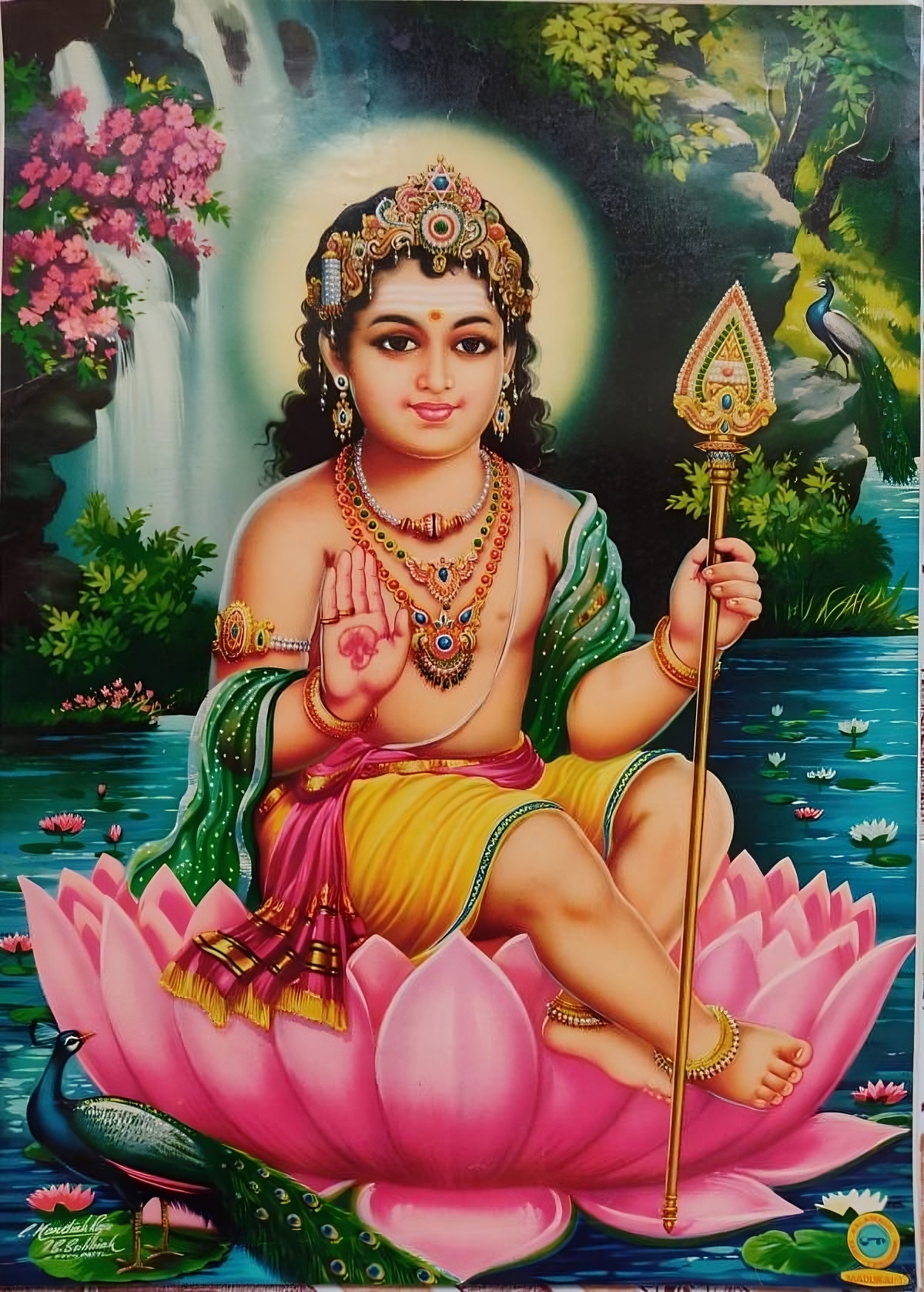 is boon.
is boon.
As time passed, the Asura brothers turned evil and tormented everyone they met. They also troubled the Devas. All the Devas pleaded to Lord Shiva to help them from the Asuras. Lord Shiva closed his eyes and meditated (Space or Ether element). He opened his third eye, and from there, fire sparks emanated. Agni Bhagavan (Fire element) and Vayu Bhagavan ( Wind Element) carried the sparks and dropped them into the holy river Ganges ( Water element). Finally, Ganges deposited the Sparks onto ‘Saravana Poigai - A freshwater pond filled with reeds’. He placed the six sparks on six floating lotuses (representing Earth elements). The six sparks turned into six babies. Six Kartigai maidens (stars from the constellation of Pleiades) showed love and raised the six babies.
Goddess Parvathi (represents the pure consciousness) came to know about the children of Shiva and hugged the six children into one child. The birth of Lord Muruga might sound like an excellent bedtime story initially, but it signifies the essence of spirituality. The process of the five elements joining with each other with pure consciousness, giving rise to spiritual intelligence, is explained in the story.
Goddess Parvathi gifted a Vel / Spear to Lord Muruga. Lord Muruga soon came to know the reason behind his creation. He waged war on the Asuras.
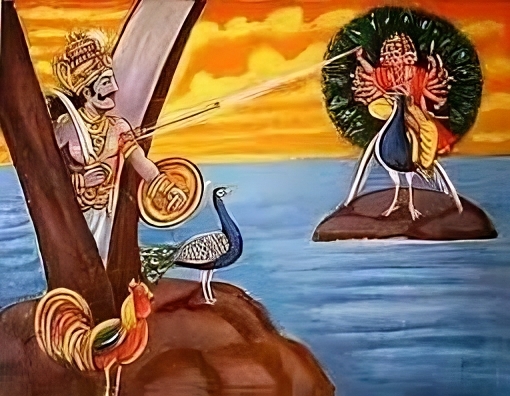
Soorapadman had magical capabilities and kept changing his forms. He took the form of a mango tree, and Lord Muruga pierced it with his Vel. He tamed the Asura into a peacock and used him as his Vahana. Finally, Lord Muruga overpowered all the Asuras and became the commander and chief of the Gods and celestial beings.
SYMBOLISM OF LORD MURUGA
Lord Muruga is a handsome young man with a Vel (spear-like weapon). He carried a saffron-coloured flag with an emblem of a Rooster. His mount is the elegant and graceful peacock (stamping on a snake). Valli and Deivanai - his two consorts, accompany him.
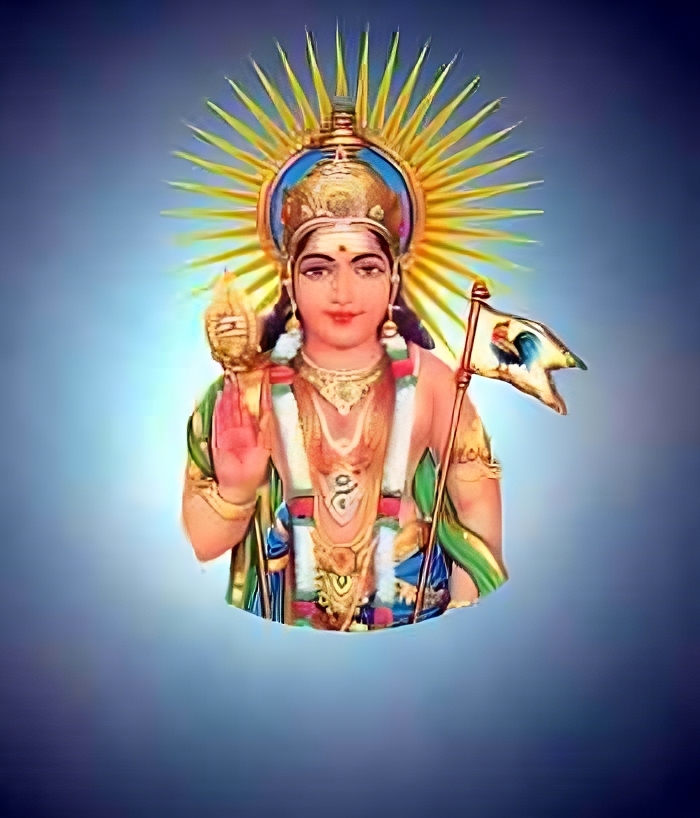 The spear / Vel is a symbol of intellect and courage. According to the Puranik texts, the Vel was given by Goddess Parvathi to Lord Muruga, wishing victory over the Asuras. This Vel is often called “Veera Vel”.
The spear / Vel is a symbol of intellect and courage. According to the Puranik texts, the Vel was given by Goddess Parvathi to Lord Muruga, wishing victory over the Asuras. This Vel is often called “Veera Vel”.
There is a story behind the Rooster on the flag. Lord Muruga fought with and defeated the Asura Taraka. Taraka pleaded to spare his life. He promised that he would always be at the feet of Lord Muruga. The Asura became a Rooster, and Lord Muruga made him an emblem on his flag. There is also a deeper, spiritual meaning to this story. The Asura-Taraka is our ego that creates havoc in life. When this ego is defeated and surrendered, a person gets the anugraha / blessing and protection from Lord Muruga.
Muruga’s mount, the peacock, is named Paravani. It stands out by spreading its magnificent plumage. According to the Puranas, Muruga was fighting the Asura Soorapadma. This Asura took many forms, like a mango tree and a peacock. Lord Muruga tamed Soorapadma in the form of a peacock and used him as his mount. Some stories also say that the Mango tree split into two pieces - out of one came the peacock, which became the Vahana, and the other piece into a Rooster, which became an emblem on the flag.
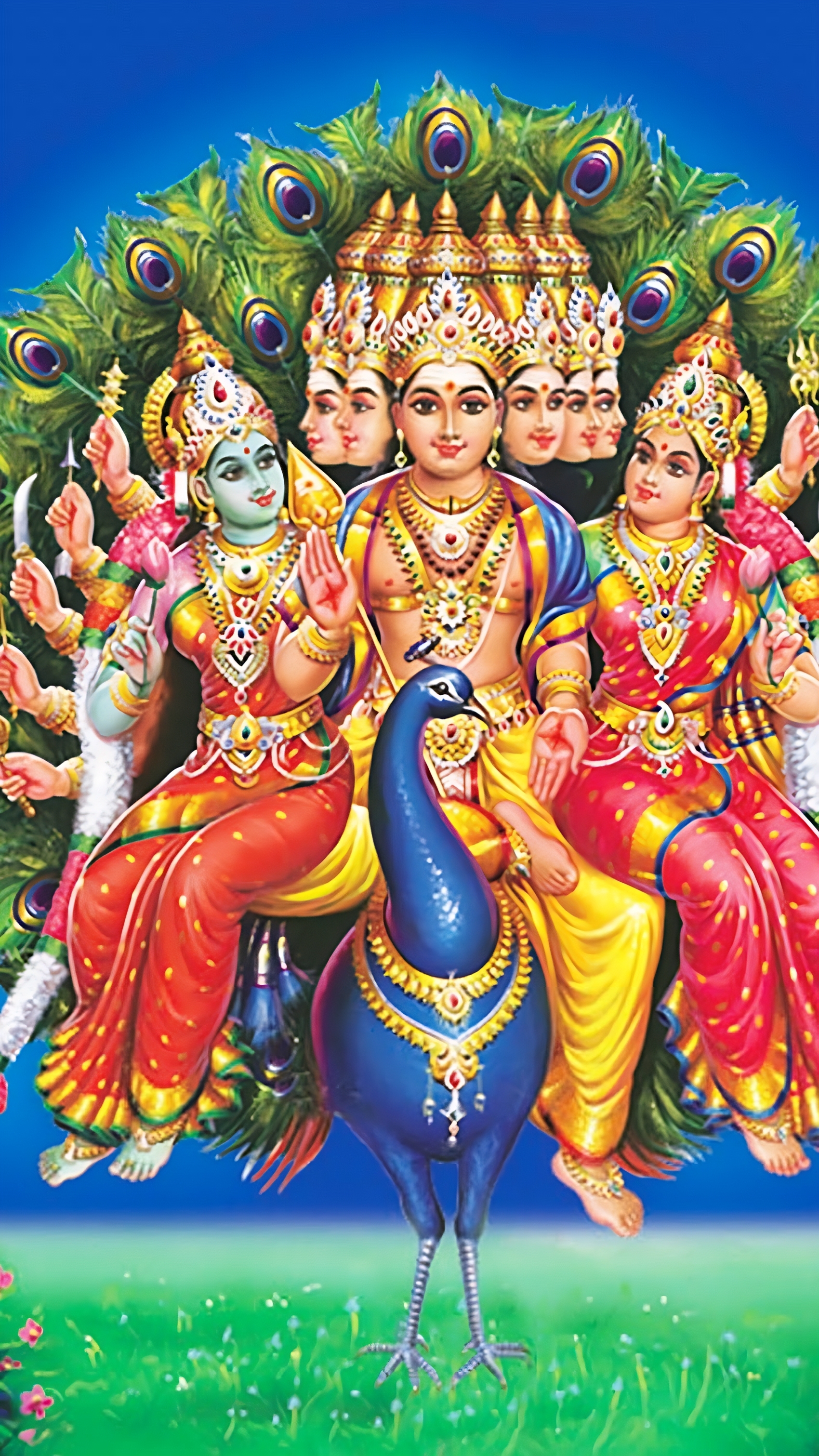 The Consorts of Lord Muruga, Valli and Deivanai represent the Ichha Shakthi and the Kriya Shakthi, respectively. Ichha Sakthi refers to one’s longing and desire. Kriya Sakthi refers to the action. Lord Muruga is the epitome of knowledge and intellect. He represents the Gyana Sakthi. These three Sakthis cannot function on its own. The Ichha Sakthi and Kriya Sakthi require Gyana (intelligence) to operate.
The Consorts of Lord Muruga, Valli and Deivanai represent the Ichha Shakthi and the Kriya Shakthi, respectively. Ichha Sakthi refers to one’s longing and desire. Kriya Sakthi refers to the action. Lord Muruga is the epitome of knowledge and intellect. He represents the Gyana Sakthi. These three Sakthis cannot function on its own. The Ichha Sakthi and Kriya Sakthi require Gyana (intelligence) to operate.
NAMES OF LORD MURUGA
Lord Muruga is addressed differently in different parts of the country and the world.
Arumugam / Shanmugam - This name is of Tamil Origin. Aru means six, and Mugam means face. Lord Muruga was born from six sparks of fire, which later became six children. Goddess Parvathi hugged the six children and made them into one divine child with six faces. These six faces represent the five elements - Earth, Fire, Water, Air and Space. The sixth element - soul or spirit infuses together with the five elements to form a living being. Some also believe that the six faces represent - Wealth, Intellect, Valour, Strength, Fame and Glory.
Deva Senapati / Senapathi - Lord Muruga is a brave warrior wielding a Vel / Spear. He fought against injustices and remained victorious over all the Asuras. He is the commander-in-chief of all the devas and celestial beings. Hence, he is known as Deva Senapati.
Velayudan -Lord Muruga, the ever-youthful warrior, always carries a Vel / Spear as a weapon to fight. This Vel was a gift from his mother - Goddess Parvathi. Velayudan means - the one who wields a Vel.
Mayil Vahanan -Lord Muruga uses a peacock as a Vahana / mount to travel. Mayil means Peacock in Tamil, and Vahanan refers to Lord Muruga, who uses the Mayil as a mount.
Saravanan -Lord Muruga took form from Six babies ( from six sparks) in a small natural pond (poigai) filled with reeds called Saravan. Hence the name Saravanan.
Karthikeya - Lord Muruga is known as Karthikeya because, during his initial childhood days, he was lovingly taken care of by the Kartika maidens ( Kritiga stars). Also, the birth star of Lord Muruga is Kartigai.
Sevarkodiyon -Lord Muruga is called ‘Sevarkodiyon’ as Seval denotes the Rooster emblem and Kodi, the flag.
Swaminatha - Lord Muruga explained the essence of creation and whispered the origins of the ‘Pranava Natham - OM’ to his father, Lord Shiva. Shiva accepted Muruga as a Guru, and seeing this, Goddess Parvathi was elated. She addressed Muruga as Swaminatha. Swami means Guru, and Natha means Shiva ( Parvathi’s husband). Meaning - became a Guru to my Lord ( Shiva).
There are many more names that people associate with and call Lord Muruga. There is also an interesting difference between the people of South and North India concerning Lord Muruga. The people in south India believe that Muruga is the younger brother of Lord Ganesha. However, the people of Northern India believe otherwise. There, their beloved Karthikeya is the elder brother of Ganesha. But, the most crucial aspect is not in the name or the seniority of birth but in understanding the symbolism of Lord Muruga and what he stood for. May our intellect grow sharper, broader and in-depth. May we strive for righteous desires that match just actions.
OM SARAVANA BHAVAYA NAMAHA
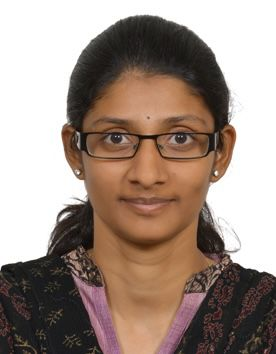 I am Vaishnavi Gurusankar, a passionate educator, a wife and a mother. I have over a decade of experience as an educator and have been closely working with teachers and children of all ages. I am also an active parenting blogger and founder of Magical Unicorn, an exclusive parenting blog founded on Indian ethos, values and stories at its core.
I am Vaishnavi Gurusankar, a passionate educator, a wife and a mother. I have over a decade of experience as an educator and have been closely working with teachers and children of all ages. I am also an active parenting blogger and founder of Magical Unicorn, an exclusive parenting blog founded on Indian ethos, values and stories at its core.
NEXT ARTICLE
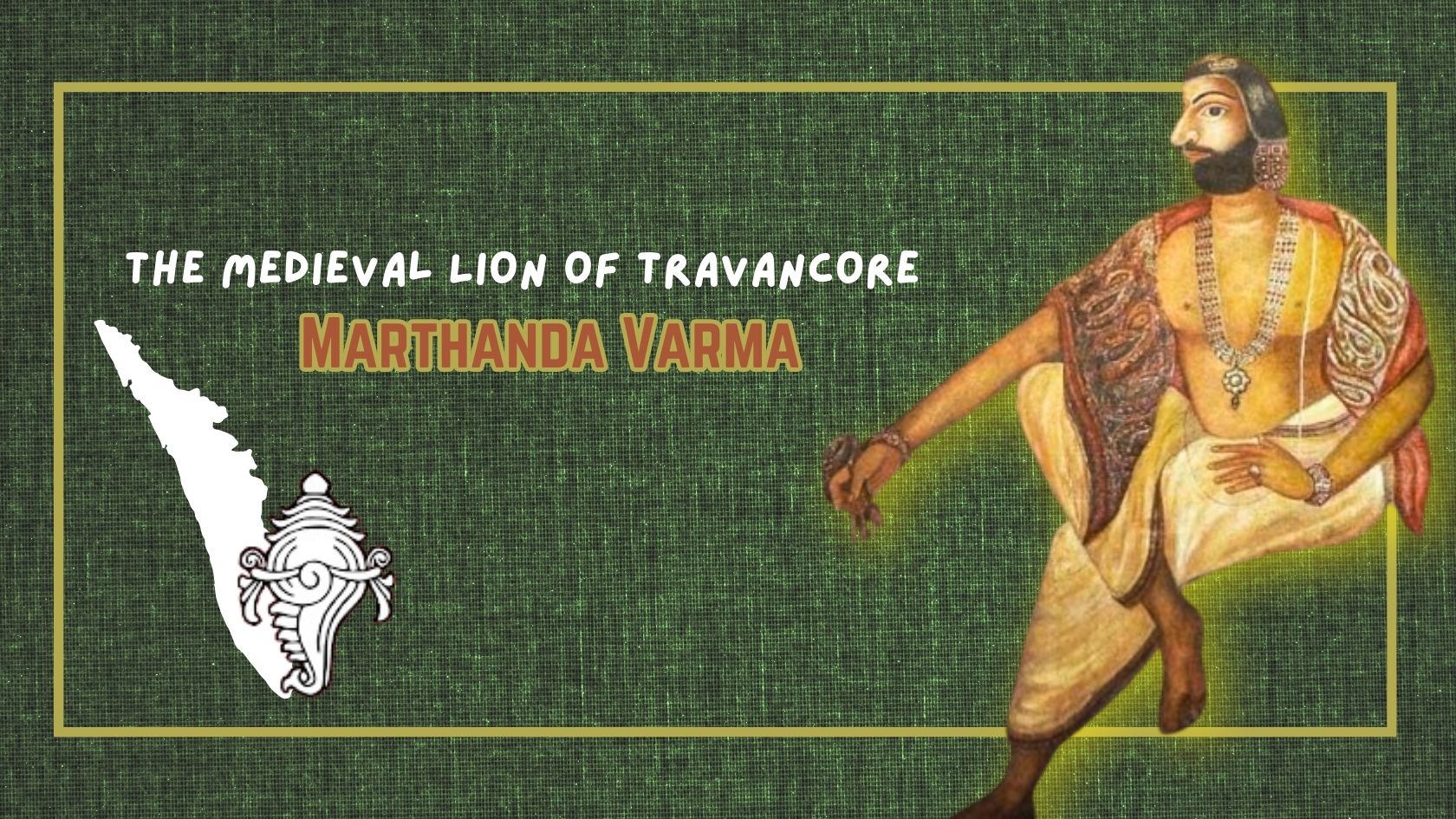
Shri Ramachandra Prasad's captivating narrative and the hot chai that was served at the right time transported me to ancient Kerala, where the extraor...
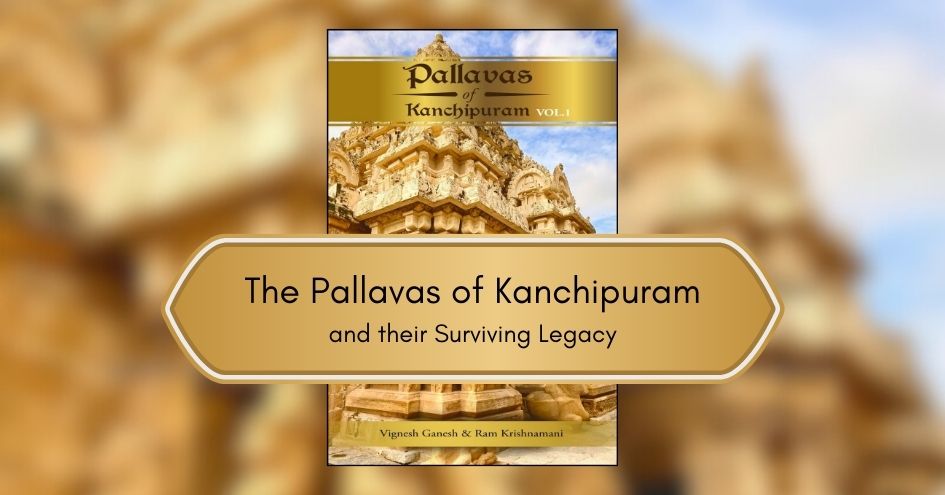
Introduction In Bharatvarsha, History is not the account narrated by victors. It is the record left behind by survivors. The study of Indian History...
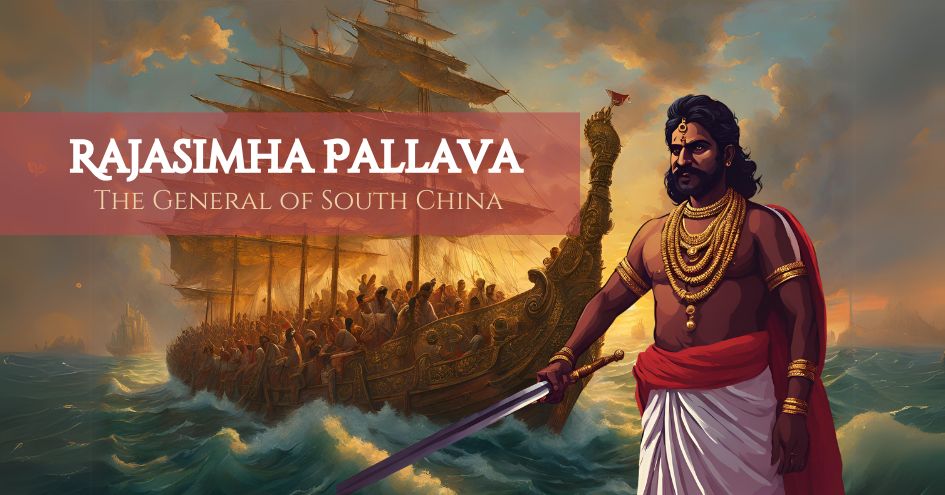
It is the first-half of the 8th Century C.E. in South India. The Pallava kingdom possesses strength and prosperity with some of the greatest monument...